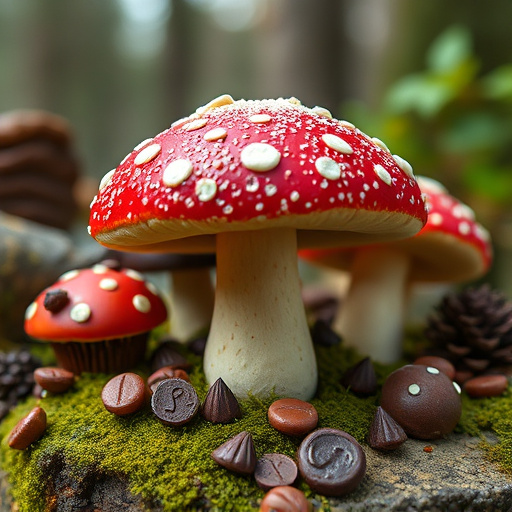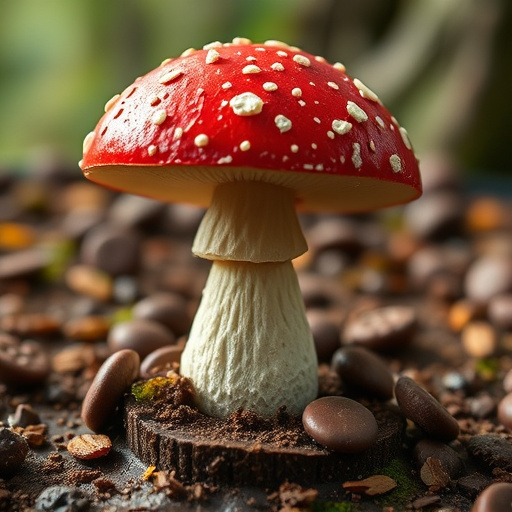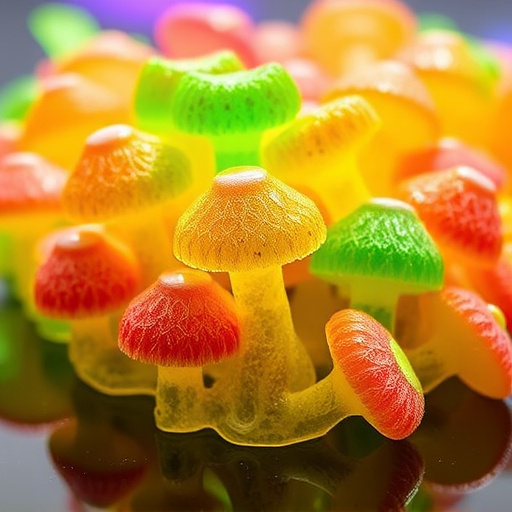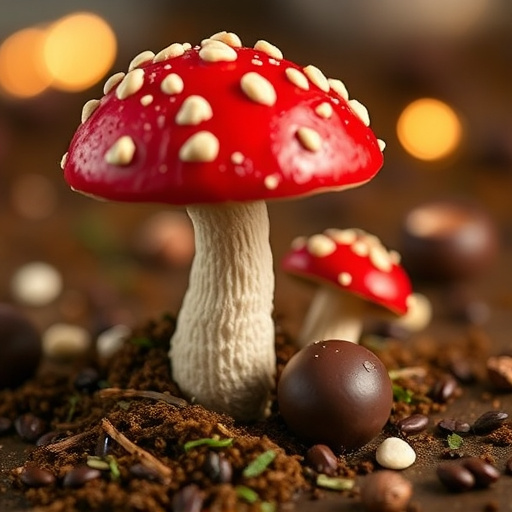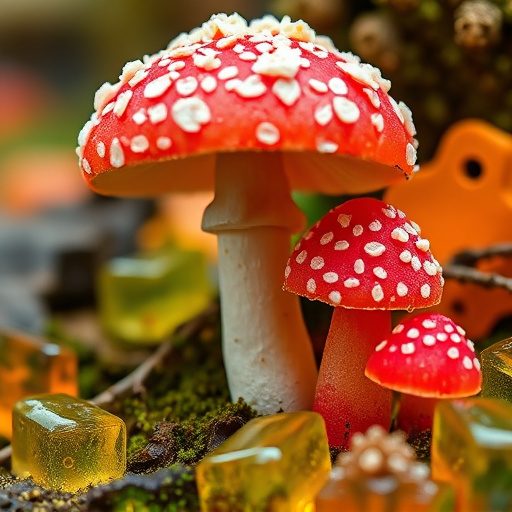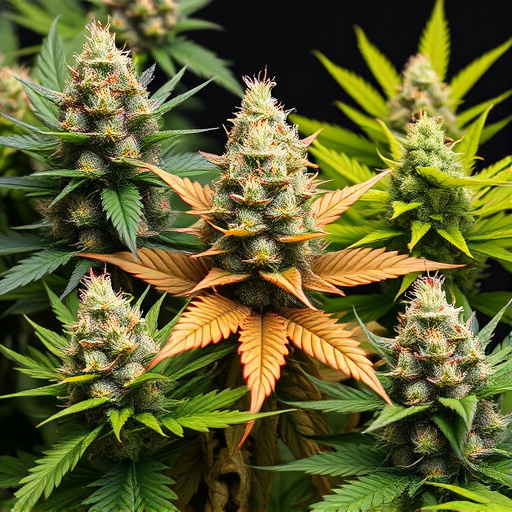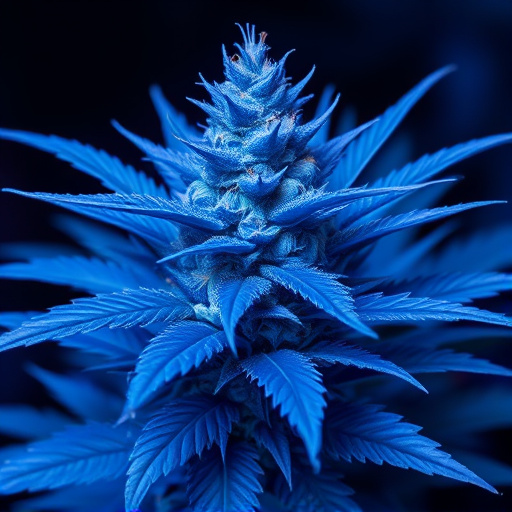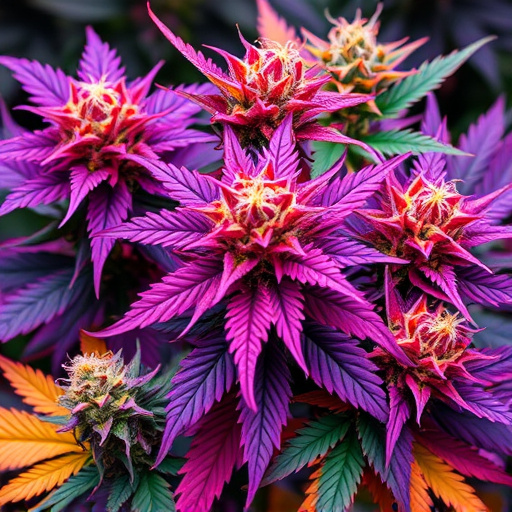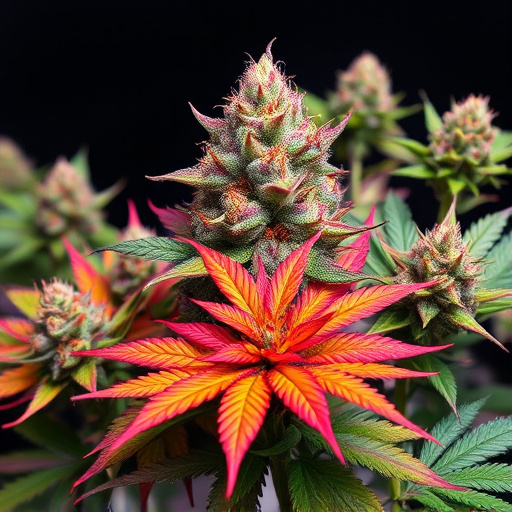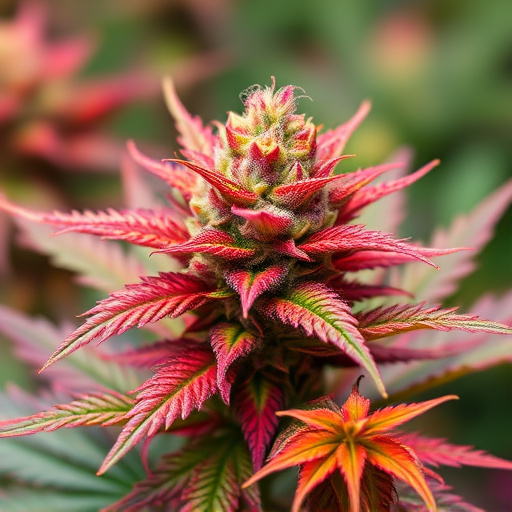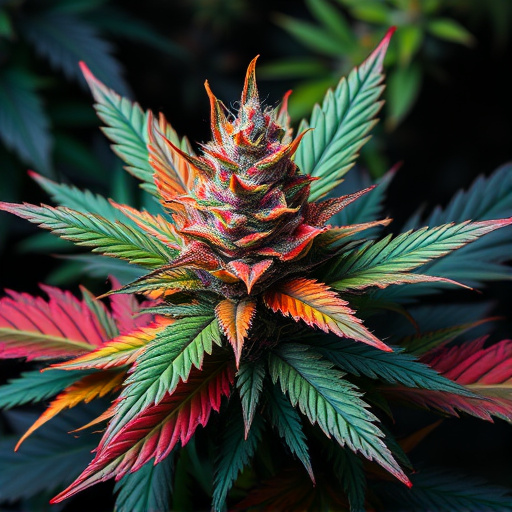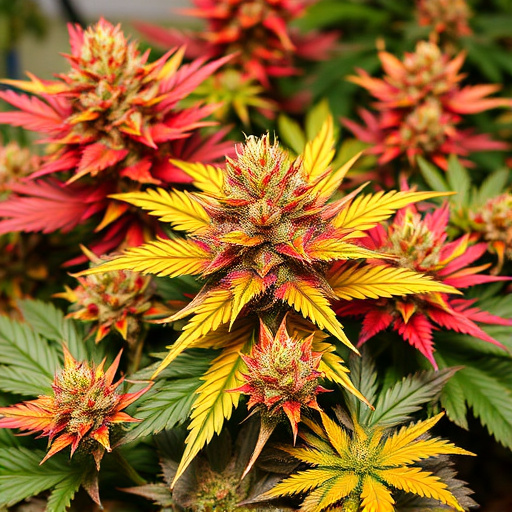Cannabis trichomes, microscopic hair-like structures on marijuana flowers and leaves, produce and store cannabinoids and terpenes responsible for aroma, flavor, potency, and psychoactive effects. These glands contribute to the visual appeal of colorful marijuana strains through their sticky, resinous appearance and light-reflecting properties, creating vibrant hues. Trichome colors, ranging from clear to amber, milky white, red, or purple, indicate maturity levels affecting terpene profiles and cannabinoid concentrations, influencing desired energetic or relaxing effects. Colorful trichomes enhance the overall sensory experience of these distinctive strains.
“Uncover the enigmatic world of cannabis trichomes—microscopic structures that play a pivotal role in shaping the unique characteristics of marijuana strains. This article explores these tiny yet powerful elements, delving into their structure and function. From influencing strain potency to contributing to diverse flavors and effects, trichomes are the unsung heroes of the colorful marijuana landscape. We’ll guide you through the science behind trichomes, offering insights into how they transform plants into the varied strains we know and love.”
- Understanding Cannabis Trichomes: The Tiny Structures That Make Marijuana Strains Unique
- The Role of Trichomes in Cannabis Plants and Their Impact on Strain Characteristics
- How Trichome Color Can Indicate Marijuana Strain Quality and Effects
Understanding Cannabis Trichomes: The Tiny Structures That Make Marijuana Strains Unique
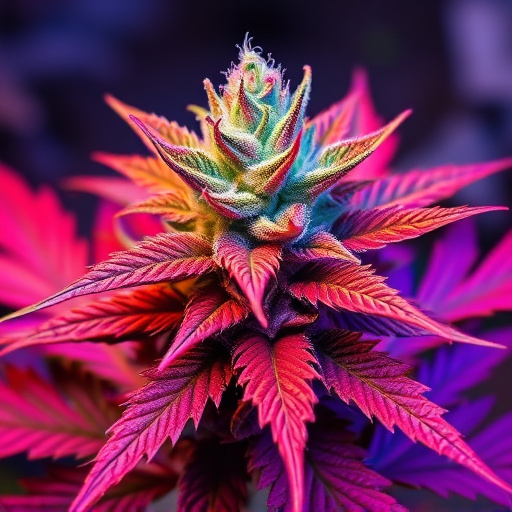
Cannabis trichomes are microscopic, hair-like structures that cover the surface of cannabis flowers and leaves. These tiny glands play a significant role in giving different marijuana strains their unique characteristics and potency. Trichomes produce and store various compounds, including cannabinoids and terpenes, which are responsible for the plant’s aroma, flavor, and psychoactive effects.
When it comes to colorful marijuana strains, trichomes often contribute to the visual appeal as well. The resins secreted by these glands can appear sticky and glossy, enhancing the overall aesthetics of the flowers. Moreover, certain strains known for their vibrant hues have trichomes that reflect light in distinctive ways, creating a captivating spectacle. Understanding trichomes is essential for cannabis enthusiasts who appreciate not just the effects but also the diverse and stunning array of colors offered by these remarkable plants.
The Role of Trichomes in Cannabis Plants and Their Impact on Strain Characteristics
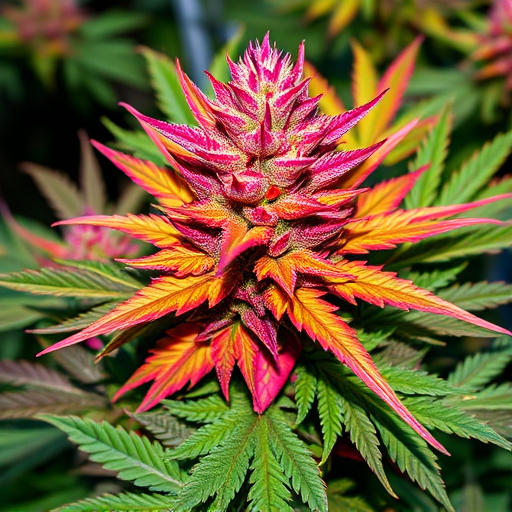
Cannabis trichomes are tiny, glandular hairs that play a crucial role in the plant’s defense mechanisms and the development of its unique characteristics. These intricate structures produce and secrete various compounds, including cannabinoids and terpenes, which are responsible for the distinctive flavors, aromas, and effects associated with different cannabis strains. Trichomes not only protect the plant from pests and diseases but also attract beneficial insects, contributing to the overall health and yield of the marijuana plants.
The presence and composition of trichomes significantly influence the strain characteristics of colorful marijuana strains. Strains known for their vibrant colors often have trichome profiles that enhance their visual appeal. For instance, high levels of sticky, resinous trichomes can result in a more potent and viscous final product, contributing to the overall experience when consuming these colorful strains. Understanding the role of trichomes allows cultivators to manipulate growing conditions and select for specific traits, creating diverse and desirable marijuana varieties that cater to various consumer preferences.
How Trichome Color Can Indicate Marijuana Strain Quality and Effects
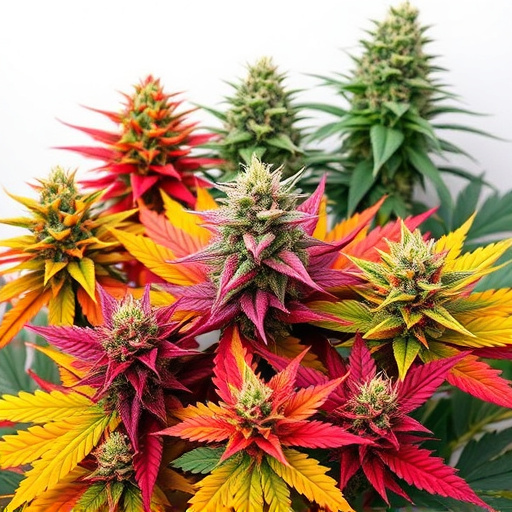
The color of cannabis trichomes can offer valuable insights into the quality and potential effects of a particular marijuana strain. These tiny, hair-like structures, often described as the “glands” on cannabis plants, produce various compounds that contribute to the plant’s unique properties. Trichome colors range from clear to amber, milky white, red, or even purple, each indicating different levels of maturity and terpene profiles.
In general, mature trichomes tend to have more diverse and potent effects. For example, clear trichomes suggest a younger plant with higher levels of THC, often associated with energetic and cerebral highs. Amber or milky trichomes indicate riper cannabis, potentially offering a balance between THC and CBD, which can provide more relaxing and medicinal benefits. Some colorful marijuana strains, like those with red or purple trichomes, are celebrated for their unique visual appeal and may have distinct aromatic and flavorful profiles, enhancing the overall sensory experience.
Cannabis trichomes are microscopic structures that play a vital role in shaping the unique characteristics of different marijuana strains. These tiny glands not only contribute to the plant’s overall health but also influence its flavor, aroma, and potential therapeutic effects. By understanding trichome development and color variations, especially in popular colorful marijuana strains, consumers can make informed decisions when selecting products for their desired effects. This knowledge allows for a more personalized cannabis experience, ensuring that each strain meets individual preferences and needs.
